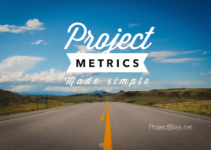Using a Stakeholder Analysis Template early in your project can improve communication and reduce surprises. I’ll show you how to be a communication superstar with this tool.
Picture this: You get to the end of your beautifully run project. The team stayed on schedule. The budget was on target. And you’re all ready to move the code to production.
And then you get an email from Sam in Audit.
Sam wants to know why he was never told about this project. He needed to be involved because of the reasons that he begins listing.
Your stomach sinks, because you know this is going to result in many hours of discussions and explanations that could have been avoided had you simply let Sam know about the project early.
By the way, Sam has asked Shelia from Accounting if she knew of the project, and she’s just emailed you. Even though there are no integrations with her system, and she’s not the main customer, she’ll be an end user, and she’s got concerns about why they may have problems with any changes. She wants to make sure it will 
GAH.
You think “Why didn’t I just talk to them sooner? This could all have been avoided.”
Why You Must Identify Stakeholders Early

If you get to the end of your project, and certain influential teams explain why the solution won’t work for them, your roll-out could be delayed. There may be other issues that a stakeholder surfaces that you did not consider early when it would have been best.
This happens.
To increase the chance of project success, you need to proactively manage your project stakeholders.
But to be most efficient, you need to identify where to place higher levels of effort, and how to engage with each. You do this by understanding the levels of stakeholder power and interest. Using a stakeholder analysis template can help you identify where to place the most focus regarding stakeholder communications.
But Who Exactly is a Stakeholder?
“Who is a project stakeholder?”
Rita Mulcahey had just asked me that question, and I stopped to think.
Actually, she had asked me and about 30 other students in her PMP Prep class. As she stood in front of us looking around the room, we shouted out answers such as “the customer” and “the sponsor”. And we kind of fizzled out of answers.
She gave an example of a sidewalk paving project undertaken by a municipality. She asked us again: who are the stakeholders?
We said things like the mayor and the businesses facing the sidewalk.
She said that while those answers are correct, a stakeholder is anyone who might be impacted by a project. In our example, even citizens are stakeholders. Citizens who use wheelchairs might impact the project negatively if their concerns are not taken into consideration.
I’ve remembered this lesson since.
According to the PMBOK Guide, 5th Edition, a project stakeholder is defined as “an individual, group, or organization who may affect, be affected by, or perceive itself to be affected by a decision, activity, or outcome of a project.” This could be a broad range of folks to engage with. But it’s worth it.
There are several ways you can use stakeholder communication to your advantage
I’ve already pointed out that by engaging stakeholders early, you can avoid potential problems later in the life of your project. But there are other benefits to be had from communicating with your project stakeholders.
- Stakeholder feedback can give you valuable information you may wish to incorporate into your project
- Gaining buy-in from influential teams/individuals can help gain support of others – they can serve as advocates
- By owning the communications with stakeholders, you can manage the project messaging.
- When you communicate early and often, you can manage expectations and ensure that teams clearly understand the changes to be implemented.
[bctt tweet=”Actively managing project stakeholders increases the chance of success. This template will help.” username=”leighespy”].
How to Use the Stakeholder Analysis Template
U
There are several steps involved in carrying out this exercise. I’ve listed them here below:
1. Identify Stakeholders – Make a list of all potential stakeholders. These could be both internal and external stakeholders.
- Identify Internal Stakeholders – Those who are committed to working for the organization: employees, owners, managers, investors, volunteers, etc.
- Identify External Stakeholders -Those who are involved with the company but not directly, or potentially impacted by it: suppliers, external customers, community, government, etc.
- Create stakeholder groups, if appropriate. If you work for a very large organization or have a very large number of stakeholders, you may find that they can be organized into logical groups. By doing this, working with a huge number of stakeholders becomes more manageable.
2. Use the Stakeholder Analysis Template. This tool will help determine levels of communication for each stakeholder. I’ve included the quadrant showing “Power/Influence” and “Interest”. Knowing where stakeholders fall in this grid can help determine how to communicate with them.
- Power/ Influence – Keep in mind that one does not have to hold a high position to be influential. There are team members who can influence others both positively and negatively, so don’t overlook them simply because they don’t hold a high title.
- Interest – Different teams will have differing reasons for being interested. Knowing what drives their interest will help target what information to share with them.
- Identify where each stakeholder (or group) falls within the Stakeholder Analysis quadrant. The CIO, for example, likely has high power and high influence.
3. Identify additional information. There will be additional information that will be helpful to include. Ensure that if you move off the project, someone else can easily begin using this document to manage stakeholders. If your favorite uncle calls and wants to take you touring Europe for a month, and your boss knows that you’ve set everything up for success, then everyone is happy.
- Include additional information such as teams, contact information, and specific interest in the project.
- Identify frequency and channels for communication.
- Modify as needed to meet your specific needs.
4. Make a plan to manage stakeholders. This will likely include the following:
- Communication channels and frequency.
- What information to share.
By identifying where and how to engage your project stakeholders, you can target your efforts for the best results. You can engage and communicate with each in the way that is appropriate. Along the way, each is informed, and in turn has hopefully become a project advocate as well. Planning early allows you to get the benefits later. Use this template to identify the stakeholders and implement your plan for managing each along the way.
Use the downloadable template I’ve provided below to identify the stakeholders and implement your plan for managing each along the way.



No Responses